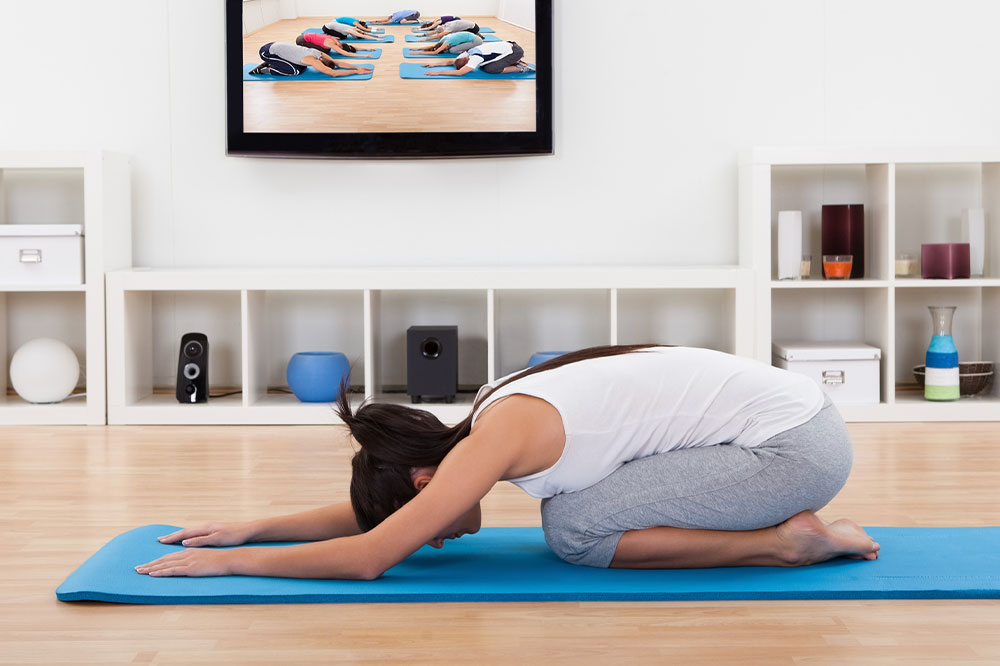10 Home Remedies for Relief from Back Pain

Since most of us are constantly bent over phones and laptops for work, bad posture and back pain have become prevalent issues among people. It is something most of us go through at some point in our lives. No matter when or why it occurs, there are many remedial measures we can take to rectify the situation and reduce the pain. Here are ten natural ways to relieve back pain at home:
Exercising
Light exercises such as a short walk, aerobics, swimming, or yoga can help deal with back pain. It may be tough to find inspiration to move when pain strikes. Still, these activities can not only help build resilience for the back, but they can also loosen tense muscles and release endorphins that relieve pain naturally. To keep muscles strong, it is advisable to include strength training exercises and stretching, which can also help avoid back pain in the future.
Improving posture
Poor posture can lead to pain in the lower back. Studies have shown that improving posture with yoga, pilates, tai chi, core stability exercises, aerobic exercises, walking, running, cycling, and swimming can significantly help improve posture and prevent back pain. Apart from this, it is also important to consider our posture during the day. When sitting, standing, or walking, try to lift the head and shoulders back and tighten abdominal muscles rather than slouching or slumping shoulders. Avoid lifting heavy items too often or sitting for extended periods, as this, too, can result in bad posture. When standing, distribute body weight evenly between both legs instead of leaning on one side. Taking small steps to improve posture every day can help back pain.
Using heat and cold
Using packs to heat and cool the back can help reduce swelling and pain. Ice packs are commonly used after injuries to numb the affected area and reduce inflammation. People can also use frozen bags of vegetables to soothe the pain. The frozen packs must always be covered with a towel to avoid frostbite and applied for a maximum of 20 minutes. Another way of soothing an aching back is to use a heating pad to improve blood circulation and boost healing. People can also use a hot water bottle if an electric heating pad is unavailable.
Stretching
Stretching can help alleviate back pain. Try one of the poses mentioned below, and hold for 30 seconds for the best results:
Touching the toes : Bend forward at the hip to touch the toes with your fingertips. This stretches the hamstrings and loosens the muscles in the lower back.
Cobra pose : Lie down on the stomach, and lift the chest slowly until your head points towards the ceiling. This stretches out the upper and lower back muscles.
Cat-cow pose : Get down on all fours and slowly alternate between arching the back and dipping it towards the floor. This helps stretch out the muscles in the mid-back.
Child’s pose : Sit on the heels with the knees at hip-width apart, and lean forward to play your head on the floor, with arms stretched out in front of you.
Using a pain-relief cream
Several over-the-counter pain-relief creams can help reduce pain for a while. Cream with menthol can have a cooling effect and temporarily dull back pain.
Massaging
For short-term relief from back pain, massages can help. Massaging techniques involve kneading, friction, gliding, vibration, or percussion. Massages can help encourage relaxation by releasing endorphins as well. A person should avoid massages if they have a skin infection, inflammation, burn, non-healed fractures, cancer tumors, or deep vein thrombosis.
Trying new shoes
High heels and flats or ill-fitting shoes can also trigger back pain. Switch to comfortable, fitted shoes with lumbar support to ease lower back pain. People can also try orthotics for more comfort and to correctly support their feet.
Sleeping well
Giving the body adequate rest can improve its pain tolerance levels. According to the CDC, most adults need 7-9 hours of sleep to function at optimal levels. Besides getting the right amount of sleep, it is also important to consider comfort and alignment. Proper comfort can encourage sleep quality and go a long way in avoiding back pain. Body alignment can be corrected with extra pillows.
Managing stress
Stress has also been linked to lower back pain. For people experiencing moderate to high amounts of stress, trying mindfulness can help. This can be achieved by:
Meditation : Studies have shown that meditation has helped elders deal with pain by raising awareness of the occurrences within the body.
Deep breathing : Deep breathing can help strengthen and stabilize the torso, which can also help people deal with back pain.
Progressive muscle relaxation : Another great way of reducing back pain is by alternatively tensing and relaxing the muscles in one muscle group at a time.
Guided imagery : Using guided imagery to focus on feelings of relaxation can also help alleviate stress and back pain for some people.
Eating healthy
According to a recent study, people with chronic back pain consume less whole grains, dairy, and fruit. Trying anti-inflammatory foods like whole grains, fruits, vegetables, fiber, yogurt, spices like turmeric and ginger, green tea, and black pepper can help reduce back pain. On the other hand, foods high in gluten, refined sugars, trans fats, saturated fats, and red meat can worsen the pain.
Back pain can generally be treated at home with easy remedies. However, if it seems to keep worsening, it might be time to speak to a professional about it. Doctors may prescribe physical therapy or other treatments to deal with the pain and prevent it from recurring. Making lifestyle changes like exercising, eating healthy, maintaining the correct procedure, switching shoes, and even changing the workstation can go a long way in combating existing back pain and stopping it from deteriorating further.






